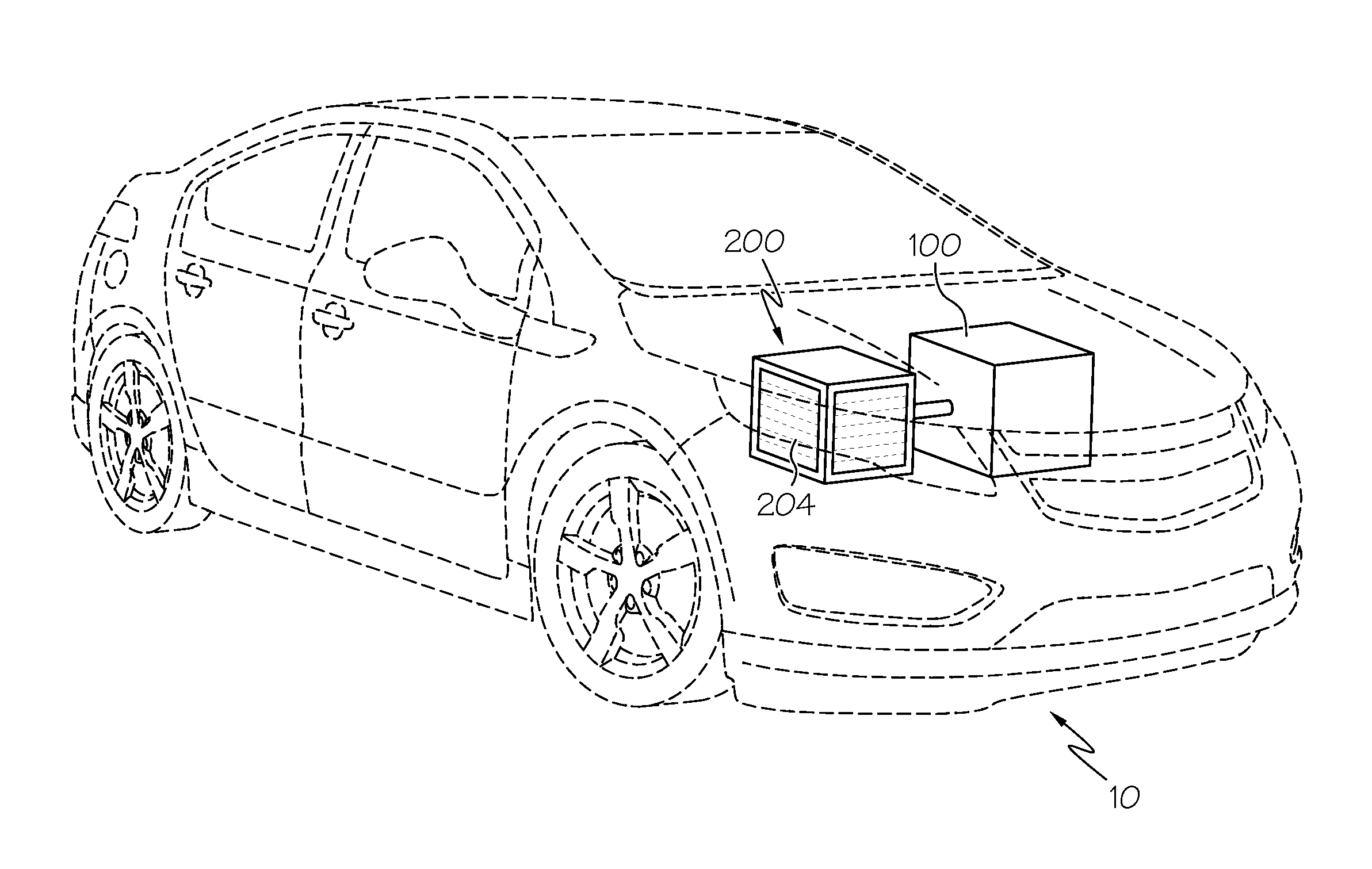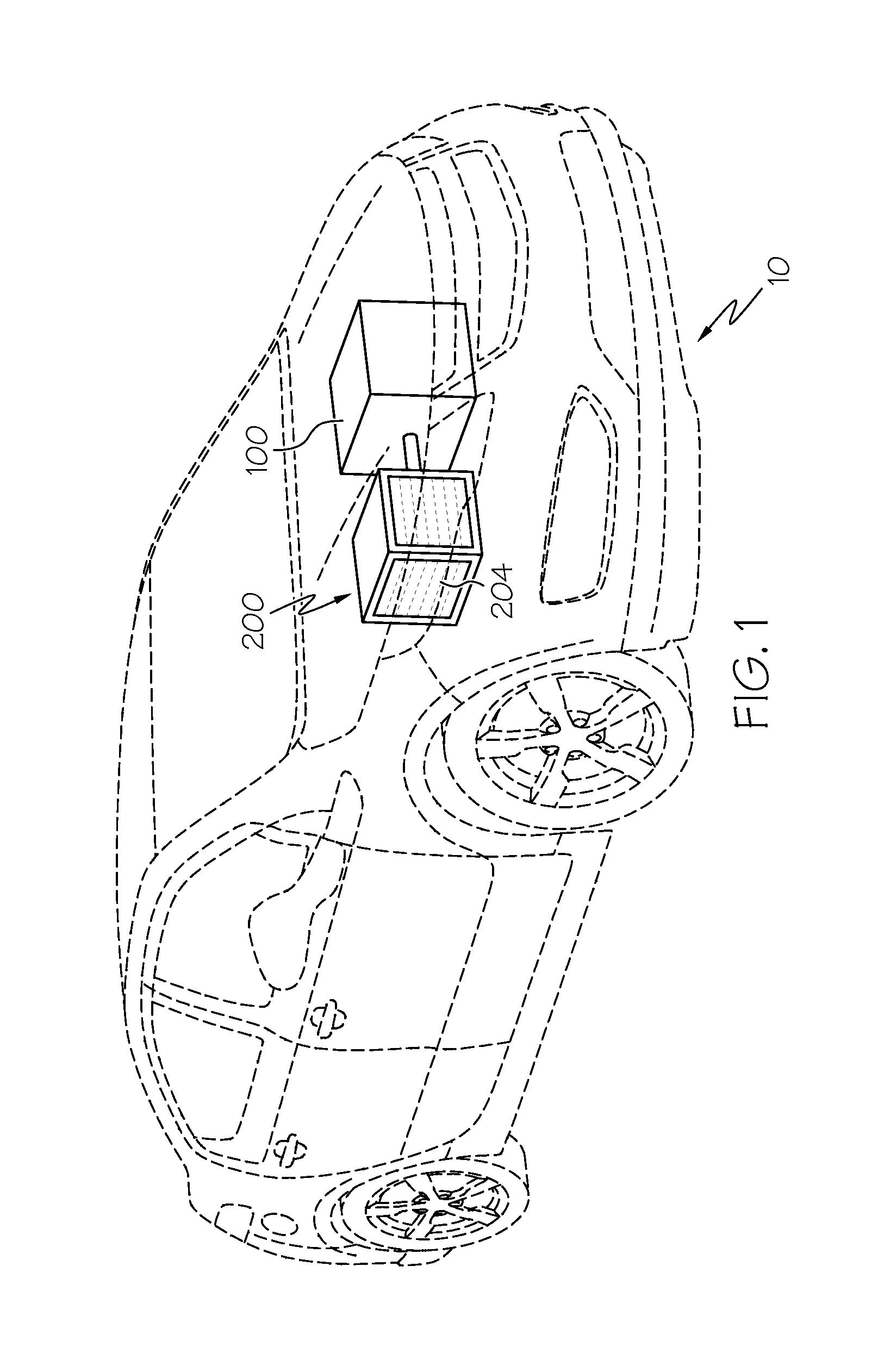Cathode flow split control and pressure control for a vehicle fuel cell power system
- Summary
- Abstract
- Description
- Claims
- Application Information
AI Technical Summary
Benefits of technology
Problems solved by technology
Method used
Image
Examples
Embodiment Construction
[0014]According to an aspect of the present invention, a cathode backpressure valve and a cathode bypass valve may be used to regulate the pressure and flow of gas to the fuel cell. A feedforward-based control strategy may be used to control the backpressure valve to regulate the fuel cell stack pressure, while another feedforward-based control strategy may be used to control the bypass valve to regulate the fuel cell stack gas flow. Even though the strategy is feedforward-based, it may also include feedback-based components; such feedback mechanisms, such as proportional-integral (PI) or proportional-integral-derivative (PID) schemes, may be used in conjunction with the feedforward strategies where it is understood an accurate feedforward bias model as a way to predict future component or system behavior is often the fastest, most optimal control, while any residual errors (if present at all) can be taken care of by the PI or PID portion. The better the feedforward portion performs...
PUM
 Login to View More
Login to View More Abstract
Description
Claims
Application Information
 Login to View More
Login to View More - R&D
- Intellectual Property
- Life Sciences
- Materials
- Tech Scout
- Unparalleled Data Quality
- Higher Quality Content
- 60% Fewer Hallucinations
Browse by: Latest US Patents, China's latest patents, Technical Efficacy Thesaurus, Application Domain, Technology Topic, Popular Technical Reports.
© 2025 PatSnap. All rights reserved.Legal|Privacy policy|Modern Slavery Act Transparency Statement|Sitemap|About US| Contact US: help@patsnap.com



